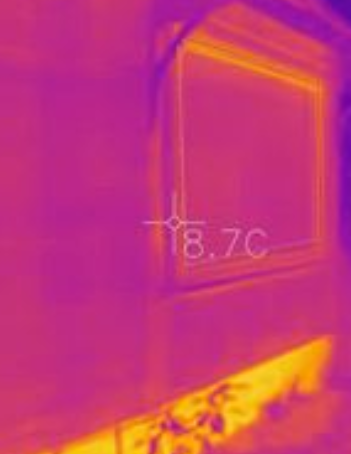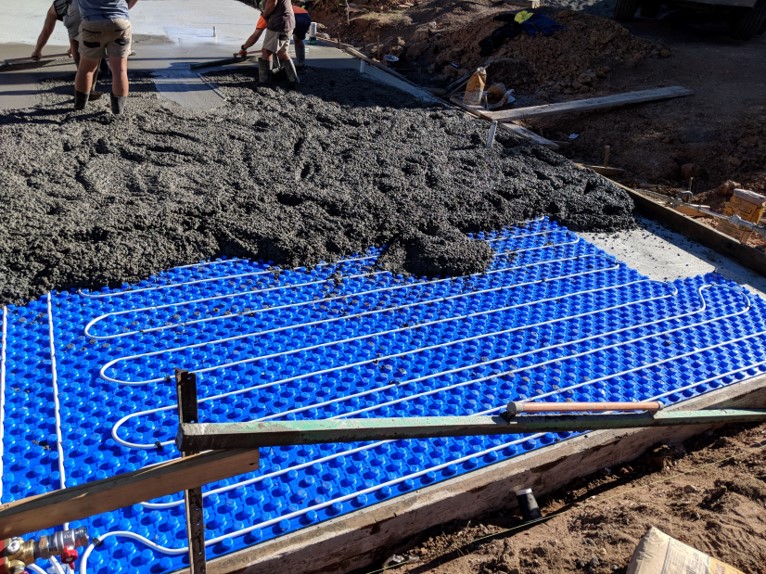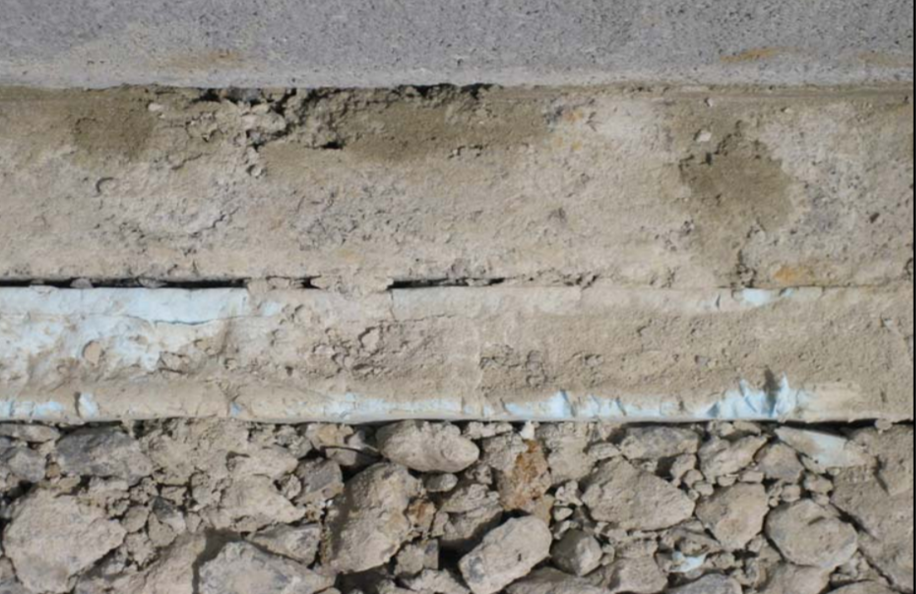
This BLOG discusses slab insulation so that you can effectively store energy and reduce heat loss from your slab-on-ground. Insulate underneath and also the slab edges. This is very important if you have solar power because you can store excess solar energy in your insulated slab. However, a slab with no insulation creates a thermal bridge for heat to flow outside, draining away your solar energy.
In southern Australian locations, the winter climate has large diurnal swings between day-time and night-time temperatures. Your slab helps to moderate these swings by absorbing heat during the day and releasing it at night.
Therefore, your concrete slab-on-ground is not only fundamental to the structure of your house but also to your personal comfort. Protect your slab insulation from ground water or it will not effectively insulate. Air is the best insulator provided it is trapped in the insulating foam and does not become water logged.
Slab insulation is more important when you heat hydronically. This is because hydronic heating raises the temperature of your slab and therefore heat will flow more quickly.
The heat flow will increase as the temperature difference between your slab and the cold outside air increases.
Consider increasing the thickness of slab edge insulation if exposed to wind and single digit temperatures, typical of a cold southerly weather front.
Insulate your slab well to achieve a significant thermal performance benefit, up to 0.8 of a Star with Thermal Performance Assessments. This goes a long way towards achieving your 7+ Star rating.


Extruded Polystyrene
The typical insulation types for under slab and slab edges are extruded polystyrene (XPS) and expanded polystyrene (EPS) foam boards. EPS is a closed cell polystyrene material that effectively traps air. It also has flame-retardant additives so it won’t burn. Australian Standard AS1366 sets out minimum properties for the classes and compliance of polystyrene boards.
XPS and EPS polystyrene foam boards have very high compressive strength making them ideal for under slab insulation.
More Information: Architecture and Design
Slab Edge Insulation
Install slab edge insulation as a continuous barrier covering as much of the footing as possible.
If you can, shovel earth against the slab edge to increase the amount of insulation but ensure that it remains dry at all times.
Thermal Conductivity
Thermal conductivity (K) is a property that determines how well a material conducts heat. The formula is K= Watts/Metres x degC.
Thermal conductivity is 1 if 1 watt of heat passes through 1 metre of material with a temperature difference of 1 degree celsius between the faces.
The thermal conductivity of reinforced concrete slab is quite high at between 0.8 and 2.0 W/M x degC whereas XPS and EPS foam boards are very low at around 0.028 W/M x degC, depending on the temperature. Therefore, the slab is about 50 times more conductive than the foam insulating material. This is why slab insulation is important.
Slab Heat Loss Without Insulation
The loss of heat conducting through a thermal bridge to the outside would be about 50 times greater than if it were not insulated with polystyrene foam boards.
Furthermore, the heat loss becomes magnified if:
- Temperature difference between the inside slab and the outside increases
- Outside exposure area of the uninsulated slab increases
- The slab is exposed to wind chill so that convection is added to slab radiation
Slab Edge Protection
You will make a considerable investment if you choose a slab-on-ground for your new house and decide to heat it hydronically. Therefore, protect your investment.
If it is exposed to the outside, add a weather, animal and insect protective layer. Prepare it for long term service and you will reap the rewards with lower operating costs.
